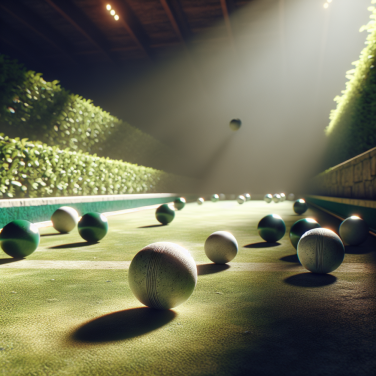Understanding the Structure of a Golf Ball
Golf balls look simple from the outside. They are small, dimpled, and all have the same fundamental spherical shape. However, as with most sports equipment, you'll find that there's a lot more to a golf ball than what meets the eye.
It's often a common misconception that the interior structure of a golf ball is hollow. This myth probably stems from the dimples and the light, bouncy nature of golf balls. The truth is, golf balls are not hollow. Their structure is much more complex and beautifully crafted to enhance a golfer's performance.
The interior of a golf ball is made up of several layers, each contributing a unique role in the golf ball's overall performance.
The center or core of the golf ball is much like the heart of any operation. This is where the golf ball gets its distance capability. The inner core is made from materials that provide high energy upon impact with the club. Most often, the core is made from rubber, formulated to respond swiftly to a club’s impact.
Surrounding the core are several more layers. In two-piece golf balls, the second layer is a hard, strong material, often surlyn or urethane, that helps the ball withstand the strong impact of being hit by a golf club. This layer comprises an extensive majority of the ball's final weight. In a three-piece ball and beyond, golf balls add more intermediate layers each serving different purposes such as adding spin or providing a soft feel. The goal here is to customize the performance of the ball for different types of golfers.
The outermost layer, known as the cover, is filled with small dimples that contribute to the golf ball's lift and flight stability. The cover is typically composed of softer materials like urethane to enhance control and feel.
There are many myths about the insides of golf balls from being filled with compressed air to containing a hazardous liquid core. However, in reality, a golf ball is a sophisticated piece of sports equipment designed not only to withstand the power of a golf swing but to also optimize a golfer’s performance.
The structure of a golf ball is, therefore, far from being hollow. It's a multilayered orb filled with materials chosen specifically to boost the player’s control, distance, and spin. Every layer has been engineered to deliver specific attributes that contribute to a golfer's performance.
The Truth: Unraveling the Misconception of Hollow Golf Balls
Many golfers often question: Are golf balls really hollow? This enduring myth has been circulating around the golfing community for quite some time now. But, ladies and gentlemen, it's time to put this debate to rest. The key takeaway here is - no, golf balls are not hollow. They are solid objects, designed with a specific structure to facilitate maximum distance and control.
To understand why golf balls are not hollow, we must delve into the science behind their construction. Golf balls are manufactured with a precise design that features a core, a cover, and sometimes with an additional middle layer.
The core, the innermost layer is made from rubber or a synthetic rubber blend. This part contributes significantly to the ball's overall distance and feel. It typically possesses a 1.5” diameter, taking up most of the space within the ball. Its structure is definitely not hollow but rather a dense, solid mass.
The middle layer, present in three-piece, four-piece, and five-piece golf balls, sits between the core and the outer cover. This layer serves the purpose of modulating the golf ball's spin characteristics. It controls the energy transfer from the clubs' impact, optimizing the launch and spin rates for different types of shots. Once again, this layer is not hollow; it is a well-designed piece that is crucial to the performance of a golf ball.
The outer cover, the final layer of a golf ball, is what gives the ball its feel and control. This shell is made from durable materials like urethane or ionomer. The cover also carries the ball's dimple pattern, which is another crucial factor influencing the ball's flight behavior. The cover fills out the remaining space on the ball, eliminating any possibility of it being hollow.
Contrary to popular belief, these layers that make up the golf ball are finely tuned to create an interesting dynamic. When a golf ball is struck, the energy from the impact compresses the ball slightly, storing energy within the ball's structure. This energy is then released during flight, giving the ball its distance and trajectory, a principle known as compression.
So where did the myth of hollow golf balls originate? A possible reason could be the hollow sensation golfers often experience when they strike the ball. This is caused by the golf ball's compression rather than the ball being empty inside. In truth, the intricate engineering that goes into the construction of golf balls is a far cry from it ever being hollow.




